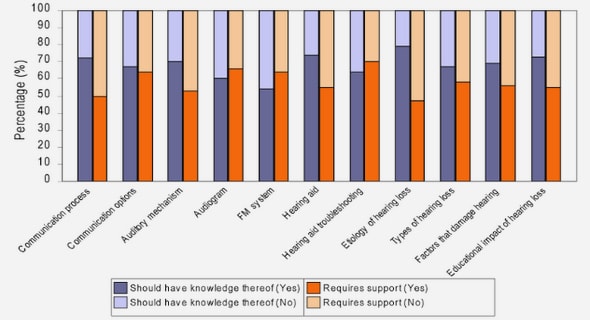(Downloads - 0)
For more info about our services contact : help@bestpfe.com
Table of contents
General introduction
Residential air conditioning global energy challenge
The Mexican context
Solar absorption chillers
Research objectives
Thesis organization
References
Chapter I. State of the art on single-stage absorption chillers
1.1. Introduction
1.2. Review of theoretical, experimental, and commercial cycles
1.2.1. Comparative criteria
1.2.2. Ammonia-based working fluids
1.2.2.1. Conventional ammonia-based working pair: NH3-H2O
1.2.2.2. NH3-LiNO3 and NaSCN
1.2.2.3. NH3–Ionic Liquids: Theoretical studies
1.2.2.4. Comparisons of NH3-based absorption systems
1.2.3. Water-based working fluids
1.2.3.1. Conventional water-based working pair: H2O-LiBr
1.2.3.2. H2O-LiI and LiCl
1.2.3.3. H2O-Ionic Liquids: Theoretical studies and experimental prototypes
1.2.3.4. Comparisons of the water-based working fluids
1.2.4. Working fluids with other refrigerant bases
1.2.4.1. Alcohol-based working fluids
1.2.4.2. HFCs and HCFCs-based working fluids
1.2.4.3. Other refrigerant bases
1.2.5. General comparisons between working pairs
1.2.5.1. Theoretical general comparisons in the literature
1.2.5.2. Discussion of the developed prototypes and commercial systems
1.3. Review of compact exchanger technologies
1.3.1. Heat and mass transfer comparative criteria
1.3.2. Non-adiabatic exchangers
1.3.2.1. Falling film
1.3.2.2. Two-phase flow exchangers
1.3.2.3. Membrane-based exchanger
1.3.3. Adiabatic exchangers
1.3.3.1. Falling film
1.3.3.2. Two-phase flow
1.3.3.3. Membrane-based exchangers
1.3.4. General discussion
1.3.4.1. Technologies used in experimental prototypes
1.3.4.2. Comparison of the technologies studied
1.4. Conclusion
References
Chapter II. Thermal and mass effectivenesses as a tool for the characterization of absorption chillers and models comparison
2.1. Introduction
2.2. Characterization of the sorption exchangers
2.2.1. Thermal and mass effectivenesses definition
2.2.2. Exchanger’s geometries and experimental conditions
2.2.3. Results
2.3. Characterization methods applied to a NH3-LiNO3 single stage prototype
2.3.1. System description
2.3.2. Characterization of the system
2.3.2.1. Characteristic equation method
2.3.2.2. Adapted characteristic equation method and Carnot function model
2.3.2.3. Effectiveness model
2.3.3. Results and validation of the models
2.3.3.1. Characteristic equation method
2.3.3.2. Adapted characteristic equation method and Carnot function model
2.3.3.3. Effectiveness model
2.3.4. Discussion of the internal operating conditions through the effectiveness model
2.3.4.1. Solution concentration conditions
2.3.4.2. Equilibrium factor
2.3.4.3. Solution flow conditions
2.3.4.4. Equilibrium deviation temperatures
2.3.4.5. Thermal and mass effectivenesses of the sorption exchangers
2.4. Conclusions
References
Chapter III. Solar absorption air conditioner in the Mexican context
3.1. Introduction
3.2. Selection of high-performance working fluid for a solar-geothermal absorption cooling system and techno-economic study in the northern Mexican conditio
3.2.1. Climatic conditions and ground temperature profiles
3.2.2. Thermodynamic comparison of the working fluids
3.2.2.1. Description of the system
3.2.2.2. Assumptions for the thermodynamic analysis
3.2.2.3. Thermodynamic analysis
3.2.2.4. Results and discussion
3.2.3. Integrated solar-geothermal system and economic feasibility study
3.2.3.1. Solar-geothermal absorption cooling system and dimensioning
3.2.3.2. Economic assessment
3.3. Solar absorption air conditioner with an innovative bi-adiabatic configuration: dynamic model, nominal conditions and typical day operation
3.3.1. System description
3.3.2. Dynamic model
3.3.2. Results and discussion
3.3.2.1. System’s optimum operating conditions
3.3.2.2. Typical day operation
3.4. Conclusions
References
Chapter IV. New-generation adiabatic falling film mass exchanger for absorption chillers
4.1. Introduction
4.2. Experimental set-up
4.2.1. Experimental facility
4.2.2. Adiabatic sorption exchanger
4.3. Data reduction and operating conditions
4.3.1. Temperature equilibrium deviations
4.3.2. Desorbed mass and mass effectiveness
4.3.3. Design of experiments and uncertainties
4.4. Results and discussion
4.4.1. Mass effectiveness regression
4.4.2. Model interpretation
4.5. Comparison with other technologies
4.5.1. Membrane desorbers effectiveness
4.5.2. Performance comparison
4.5.3. Pressure drop comparison
4.6. Conclusions
References
Conclusions and future work
Conclusions
Future work



